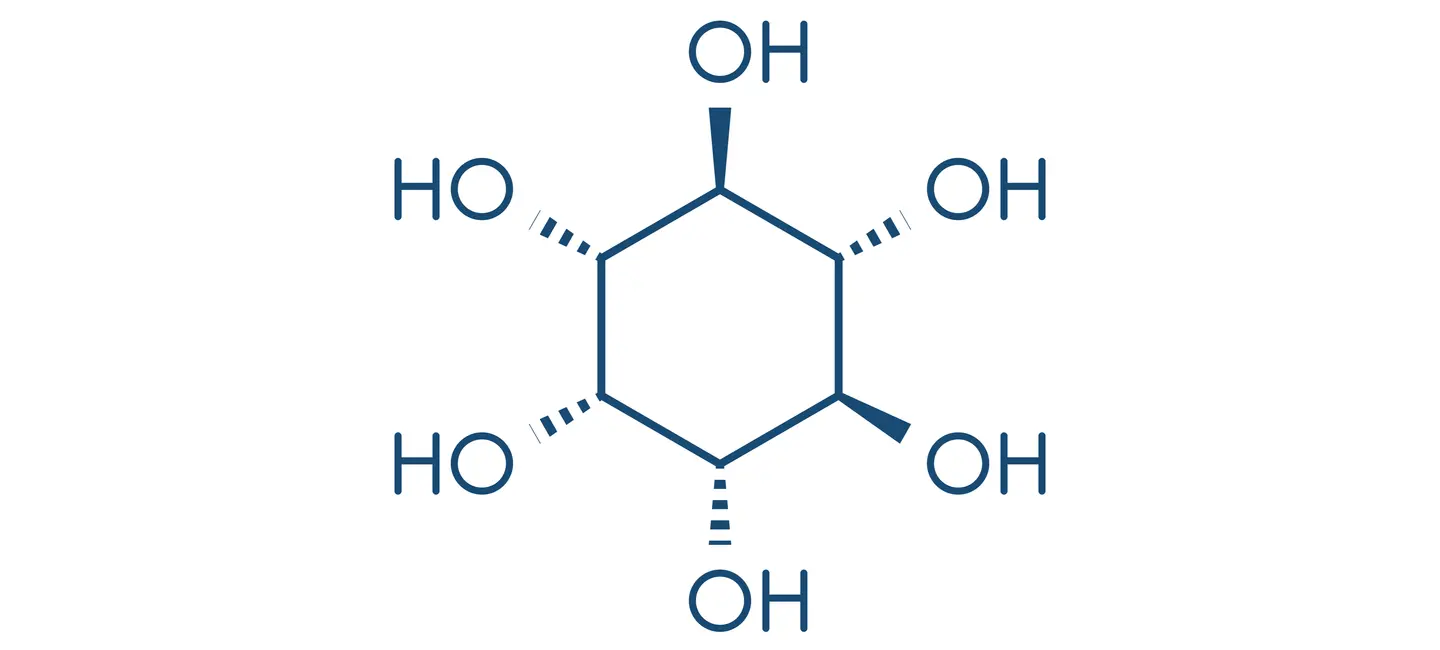
Inositol is a sugar made in the body and found in foods. It can be found in nine forms. Myo-inositol and D-chiro-inositol are most common in supplements.
Inositol might balance certain chemicals in the body to help with mental conditions such as panic disorder, depression, and obsessive-compulsive disorder. It might also help insulin work better.
People use inositol for metabolic syndrome, polycystic ovary syndrome (PCOS), and for reducing the risk of preterm birth. It's also used for insomnia, bipolar disorder, PTSD, and many other conditions, but there is no good scientific evidence to support most of these uses.
Don't confuse inositol with inositol nicotinate or IP-6. These are not the same.
Is It Effective?
NatMed Pro rates effectiveness based on scientific evidence according to the following scale: Effective, Likely Effective, Possibly Effective, Possibly Ineffective, Likely Ineffective, Ineffective, and Insufficient Evidence to Rate.
- A grouping of symptoms that increase the risk of diabetes, heart disease, and stroke (metabolic syndrome). Taking inositol by mouth, with or without alpha-lipoic acid, seems to improve insulin resistance, cholesterol, triglycerides, and blood pressure in people with metabolic syndrome.
- A hormonal disorder that causes enlarged ovaries with cysts (polycystic ovary syndrome or PCOS). Taking inositol by mouth seems to lower triglyceride levels, decrease blood pressure, and improve blood sugar, ovulation, and pregnancy rates in people with PCOS.
- Preterm birth. Taking inositol with folic acid by mouth during pregnancy seems to lower the risk of preterm birth in those who have a higher chance of developing diabetes during pregnancy.
- A sudden and serious lung condition (acute respiratory distress syndrome or ARDS). Giving myo-inositol by IV to premature babies with ARDS doesn't seem to help. In fact, it might be harmful. IV products can only be given by a healthcare provider.
- Anxiety. Taking inositol by mouth doesn't seem to improve symptoms of anxiety.
- Depression. Taking inositol by mouth doesn't improve symptoms of depression.
- Nerve pain in people with diabetes (diabetic neuropathy). Taking inositol by mouth doesn't seem to improve the symptoms of nerve pain caused by diabetes.
- An eye disorder in premature infants that can lead to blindness (retinopathy of prematurity). Giving myo-inositol by IV or by mouth to premature babies doesn't seem to lower the chance of developing retinopathy. In fact, it might increase the risk of death. IV products can only be given by a healthcare provider.
There is interest in using inositol for a number of other purposes, but there isn't enough reliable information to say whether it might be helpful.
Is it Safe?
When taken by mouth: Inositol is possibly safe for most adults when used for up to 10 weeks. It might cause diarrhea, gas, and nausea in some people.
When applied to the skin: There isn't enough reliable information to know if inositol is safe or what the side effects might be.
Special Precautions & Warnings:
Pregnancy: Inositol is possibly safe when taken by mouth, short-term. Doses of up to 4000 mg of myo-inositol daily have been used with apparent safety.
Breast-feeding: There isn't enough reliable information to know if inositol is safe to use when breast-feeding. Stay on the safe side and avoid use.
Children: Inositol is possibly safe when taken by mouth for up to 12 weeks in children ages 5-12 years old.
Medications for diabetes (Antidiabetes drugs)
Interaction Rating=Moderate Be cautious with this combination.
Inositol might lower blood sugar levels. Taking inositol along with diabetes medications might cause blood sugar to drop too low. Monitor your blood sugar closely.
Herbs and supplements that might lower blood sugar: Inositol might lower blood sugar. Taking it with other supplements with similar effects might lower blood sugar too much. Examples of supplements with this effect include aloe, bitter melon, cassia cinnamon, chromium, and prickly pear cactus.
There are no known interactions with foods.
Inositol is a sugar alcohol found in foods such as cereals, corn, meat, citrus fruits, and legumes.
As medicine, inositol has most often been used by adults in doses of 1-4 grams by mouth daily. It's often taken together with 200-400 mcg of folic acid daily. Speak with a healthcare provider to find out what dose might be best for a specific condition.
1,2,3,4,5,6-Cyclohexanehexol, 1,2,5/3,4,6-inositol, (1S)-inositol, (1S)-1,2,4/3,5,6-inositol, Antialopecia Factor, (+)-chiroinositol, cis-1,2,3,5-trans-4,6-Cyclohexanehexol, Cyclohexitol, Dambrose, D-chiro-inositol, D-Myo-Inositol, Facteur Anti-alopécique, Hexahydroxycyclohexane, Inose, Inosite, Inositol Monophosphate, Lipositol, Meso-Inositol, Méso-Inositol, Monophosphate d'Inositol, Mouse Antialopecia Factor, Myo-Inositol, Vitamin B8, Vitamine B8.
Information on this website is for informational use only and is not intended to replace professional medical advice, diagnosis, or treatment. While evidence-based, it is not guaranteed to be error-free and is not intended to meet any particular user’s needs or requirements or to cover all possible uses, safety concerns, interactions, outcomes, or adverse effects. Always check with your doctor or other medical professional before making healthcare decisions (including taking any medication) and do not delay or disregard seeking medical advice or treatment based on any information displayed on this website.
© TRC Healthcare 2024. All rights reserved. Use and/or distribution is permitted only pursuant to a valid license or other permission from TRC Healthcare.
